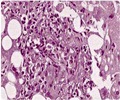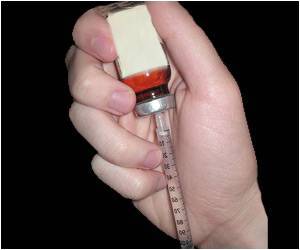Vanderbilt study found that azithromycin has been overprescribed for childhood pneumonia. Amoxicillin alone, just as effective and a better choice.

‘Amoxicillin alone, rather than combined with azithromycin, is just as effective and a better choice as it relates to efforts to curb antibiotic resistance.’





"Combination therapy with azithromycin is unnecessary in most cases of pediatric pneumonia, both because the bacteria targeted by azithromycin are less common than other causes of pneumonia, including viruses, and the effectiveness of azithromycin has not been clearly demonstrated in prior studies," said lead author Derek Williams, M.D., MPH, assistant professor of Pediatrics."By minimizing antibiotic exposure whenever possible, we can preserve the effectiveness of currently available antibiotics."
Williams and co-authors studied 1418 children (693 girls and 725 boys) hospitalized for radiologically confirmed community-acquired pneumonia. Amoxicillin, a beta-lactam antibiotic, was used on 72 percent of the study patients while 28 percent received a combination of amoxicillin plus azithromycin.
There were no significant differences in length of stay, intensive care admission, readmissions or recovery at follow-up between the groups. Thus, "the combined therapy showed no benefit over the single therapy of just amoxicillin," Williams said.
There were also no differences among important subgroups of children most likely to benefit from the combination therapy, including children with Mycoplasma pneumoniae, those with wheezing and those admitted to intensive care, he added.
Advertisement
"Azithromycin is used to treat so called atypical pneumonia bacteria, including Mycoplasma pneumoniae. Atypical infections are somewhat common in older children and adolescents, but the benefits of treating these infections is less clear."
"Pneumonia accounts for more antibiotic days in U.S. children's hospitals than any other condition. It is a hugely important target for antimicrobial stewardship efforts," he said. "Reducing unnecessary antibiotic use in pediatric pneumonia and other respiratory illnesses is one strategy to help slow the progression of antimicrobial resistance."
In most pneumonia cases, the actual causative pathogens may be difficult to identify, and antibiotics are selected empirically. Although about 30 percent of children hospitalized with pneumonia received combination therapy in this study, atypical pathogens were detected in less than 9 percent.
"This apparent discrepancy highlights the challenges of empirical therapy for pediatric pneumonia, and the need to characterize the most common pneumonia pathogens and the effectiveness of antibiotic regimens, to inform empirical treatment", said Carlos G. Grijalva, M.D., MPH, senior author and associate professor of Health Policy.
Co-author Kathryn Edwards, M.D., professor of Pediatrics and the Sarah H. Sell and Cornelius Vanderbilt Chair, said the report is part of a very large study of pneumonia in children and adults conducted at Vanderbilt and sites in Utah, Chicago and Memphis.
"This work has revealed the important role of viruses in pneumonia and provided guidance on the best antibiotics to use to treat bacterial pneumonia," she said.
The complete research report is available at JAMA Pediatrics.
Source-Eurekalert














